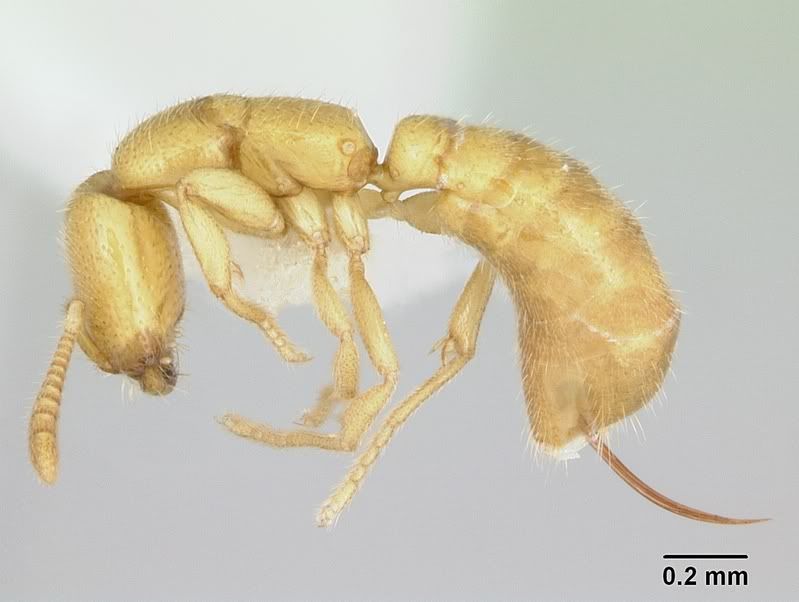I just found the Dracula Ant. (Cue thunder.)
 |
| Image by April Nobile via AntWeb |
It doesn’t particularly look like much. However, note the stinger on the Dracula Ant (Adetomyrma venatrix): much like their wasp cousins, worker Dracula Ants will seek out prey and paralyze it with its stinger, and then… fail to drink its blood. No, it’s far worse then that. The helpless prey are then dragged back to the colony, and fed to the larvae. Once the larvae are satiated, the adults proceed to chew holes in them, sucking out some of their blood1. This is termed “non-destructive cannibalism” by scientists, because the larvae aren’t killed. ARKive goes on to state (a little creepily): “Nevertheless, when hungry workers enter the chamber, the larvae have been observed attempting to flee and escape their fate.”
As weird as this sounds, other ants will feed outside food to their larvae for digestion, some of which the larvae will regurgitate as food for the adults. This allows each individual ant to have specialized mouthparts for their tasks. Since larvae are always specialized for eating, this allows them to act as a stomach for the colony.
While these miniscule bloodsuckers were first described in 1993, and the first colony discovered in 2001, they are listed as Critically Endangered by the IUCN. Like many animals from Madagascar, the island’s growing human population is encroaching on their habitat. Unlike most other ants, the queens are flightless, so they are that much more susceptible to habitat fragmentation. Their major protection lies in the hands of one guy—Dr. Fisher of the California Academy of Sciences. He was the one to discover the first colony, and he moved a few into his lab. If there is ever a need to start a captive breeding program, he seems to be the go to guy.
Edit: I just got new information (and a video!) on the Dromedary Jumping-Slug. I knew I created that e-mail address for a reason.
1Technically, insects don’t have blood. They have hemolymph, which translates to “blood-water,” which is a pretty good definition of what it is.

1 comment:
Freaky ants...very cool! (Although, little black capes with large collars would clinch it) Thanks for the shout out, too.
And what an oxymoron:
"non-destructive cannibalism"
don't tell Hannibal that...
Post a Comment